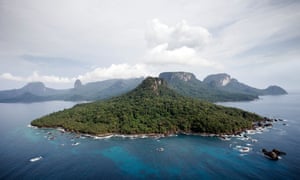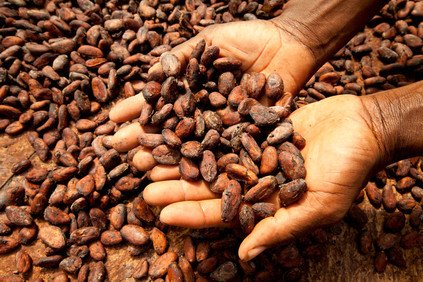As
a long-time off-and-on-again student of Portuguese, I’m quite familiar with the
Lusosphere (countries that speak Portuguese). And one small island nation in
the Atlantic off the coast of Africa is included in that. It’s not a country
many people (i.e. Americans) are aware even exists, but I’ve taken it upon
myself to tell everyone about all of these really cool countries “no one’s ever
heard of.” Besides what’s not to love about a country where practically every
word has an accent mark in it?
Although
the dates of discovery by Portuguese sailors are somewhat disputed, the names
of these two islands were roughly named for the dates they arrived. São Tomé
was discovered on or around December 21 (1471), which is St Thomas’ Day. The
island of Príncipe was originally named Santo Antão after they landed there on
January 17 (1472), which is St Anthony’s Day. A few decades later, its name was
changed to Ilha do Príncipe after the Prince of Portugal – gotta keep the boss
man happy.
São
Tomé and Príncipe are located on the Atlantic side of Africa (actually in the
Gulf of Guinea). The island of São Tomé is just off the coast of Gabon, while
Príncipe, a much smaller island, is located off of the coast of mainland
Equatorial Guinea. One of the smaller islands that belong to Equatorial Guinea,
Annobón, is located to the southwest of São Tomé, while Bioko (also belonging
to Equatorial Guinea) is northeast of Príncipe. The islands have a tropical
climate with a rainy season (October to May) and a dry season (June to
September).
Unlike
most other countries, this was one country that was not inhabited at the time
Europeans arrived. The Portuguese were the ones who arrived first and took this
for themselves. They quickly established these two islands as a place for
sugarcane plantations, and sent the people they really didn’t like (mostly
Jews) to man the farms. (Great work, guys. Way to handle your discrimination.)
However, by the early 1500s, the Portuguese started using these islands as a
staging center for the trans-Atlantic slave trade. They started pulling
Africans from all over the mainland, and consequently, they also became a huge
producer of sugar. By the early 1800s, coffee and cocoa were added to the mix
of exports. Because the soil here is rich from volcanic ash, it makes for prime
agriculture, and mega plantations were created to handle the demand. These mega
plantations (called roças) run by the
Portuguese led to absolute power and the abuse of that power. Although slavery
was officially abolished in 1876, there were documented cases that it was still
in effect some 30 years later. As many African countries were demanding their
independence during the 1960s, São Tomé and Príncipe was no exception. Their
independence was finally granted in 1975. During the 1990s, they had several
reforms and peaceful elections, although they had some difficulties during the
early 2000s dealing with corruption building up to an attempted coup in 2009.
The
capital and largest city is the City of São Tomé, which is located on the
island of… São Tomé. (Were you expecting something else?) It’s the center of
government, education, commerce, transportation, and media. The city was
founded in 1485 and has served as an important port for centuries. There’s
actually a weekly ferry that goes to Cape Verde (oh, I’m sorry, it’s Cabo Verde
now), but that seems to me like it would be a very long trip.
It
should come to no surprise, knowing the islands’ history, that their largest
economic driver is agriculture. Cocoa is now their largest crop, representing
roughly 95% of their crop exports. They also depend on copra, coffee, fishing,
and palm kernels. They are also making plans to try to development more tourism
in the country. São Tomé and Príncipe often struggles financially, but they
have an agreement with Nigeria to jointly explore the Niger Delta Basin as part
of a petroleum exploration. So, hopefully that’s working out for them.
Because
of their ties to Portugal, the majority religion is Roman Catholicism. However,
there are a few other denominations and religions represented here as well. A
number of smaller followings of Protestant denominations such as Seventh-Day
Adventists and other evangelical sects are spread throughout the islands. There
is also a small number of Muslims.
 |
| I picked this because in 2003, I went to Porto Alegre, Brazil. I think they should be sister cities. |
As
I mentioned in the introduction, Portuguese is the official language of São
Tomé and Príncipe. The vast majority of the people know it as their first
language since it’s been around these parts since the 1400s. However, there are
also a number of Portuguese-based creoles spoken here: Forro, Cape Verdan
Creole, Angolar, and Principense. As far as foreign languages that are taught
in school, the most popular ones are French and English (for obvious
reasons—these are used most often as a lingua franca in many areas of Africa).
Probably
one of the oddest things I’ve seen is on the island of São Tomé: the Pico Cão
Grande (or Great Dog Peak). It’s a volcanic plug located on the southern end of
the island. Volcanic plugs are formed when magma solidifies in a vent on a
volcano, and it just builds up in a tower. To me, it looks like a giant finger
sticking out of the ground. (Maybe it belongs to the Easter Island heads?) Although
it’s very difficult to climb, two teams of climber have managed to do this
impossible feat. There are apparently a crap ton of snakes up there, so that’s
a huge no thanks from me.
Up
next: art and literature




.jpg/300px-Catedral_de_Nossa_Senhora_da_Gra%C3%A7a_S%C3%A3o_Tom%C3%A9_(20234213142).jpg)

No comments:
Post a Comment